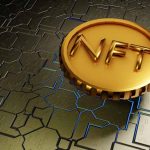Publisher behind Outerverse, Freedom Games, has announced that players will be able to use NFT in the game.
Players can use NFT in Outerverse game
Outerverse is described as a “mission-driven automation adventure game” that allows you to “build automated machines and weapons, then use them to travel across the universe, defeating giants giant and advance your technology while experiencing cosmic events.”
The game also had a successful launch based on our predictions and has maintained ‘mostly positive’ reviews since it launched.” He went on to describe how the craft genre is “a popular genre with a younger audience base.”
Outerverse has a gameplay loop familiar to most gamers: build something to fight a boss, advance your tech, and progress to the next boss. It’s simple, but it works
What are NFT Games and How to Make NFT Games?
Whether from a friend, YouTuber, or mainstream media, you’ve most likely heard of NFTs. The rapid popularity growth of NFTs has taken both the common man as well as some crypto experts by storm. The increase of NFTs has also gained attention from game developers as they search for ways to utilize NFTs in games. Some people might say that NFT games are not here to stay; however, we know that NFT gaming is just getting started. Therefore, great opportunities await those developers prepared to dive deeper into the topic of NFT games and GameFi space. So, keep reading and find out the answers to the following questions: “what are NFT games?” and “how to make NFT games?”.
If you’re looking to learn how to make NFT games or get a proper answer to the “what are NFT games?” question, you came to the right place. Not only will we provide you with the answers you need to get going, but you will also learn about the ultimate Web3 development platform called Moralis. This free-to-use tool offers experienced and beginner developers the shortcut they deserve.
Moreover, thanks to Moralis’ extensive documentation, using the platform and its full potential is straightforward. Furthermore, since a part of this article focuses on how to make NFT games with Moralis, we recommend creating your free account right away. As such, you’ll be ready to follow along once we get to the section on how to create an NFT game. In fact, Moralis is the best place to get started with NFT programming for beginners. Be sure to check out our other tips and tricks for how to work with NFTs using Moralis, beyond just making NFT games, through the Moralis Blog!
What are NFTs?
Before we can answer the question of “what are NFT games?”, we need to make sure you know what NFTs are. An NFT (Non-Fungible Token) is a special kind of cryptographic token. Like other crypto tokens, it exists on the blockchain, where it represents a particular (unique) item.
As the “non-fungible” part suggests, the NFTs are unique and cannot be swapped like other fungible tokens or coins (such as native tokens on a particular blockchain). For instance, you can always trade one BTC (Bitcoin) for an equal amount (in our case, one) of BTC, as they are equal in every way. The same goes for all other fungible tokens. However, no two or more non-fungible tokens are the same. This is true even in cases where NFT series with multiple versions of a particular NFT are created. In the case of the latter, each NFT still has different metadata. A great analogy for that would be the numbered series of prints.
Given the above definition of NFTs, you can understand that this makes NFTs great for serving as a representation of all sorts of unique items, both in the digital and real world. Common examples include digital art, digital collectibles, in-game items or characters, real-estate ownerships, various certifications, etc.
While the hype around certain NFT projects is already reaching unimaginable heights, real-world use cases are just starting to appear. Furthermore, NFT games are also in their infancy. In addition, while you can easily create your own NFT, it’s a bit trickier to create your own NFT game. However, the process is not as difficult and complicated as you might think (more on that later on). As such, NFT games offer great opportunities for all blockchain developers interested in that particular niche.
What are NFT Games?
We’ve mentioned NFT games a couple of times, but let us now dig deeper into the topic of what NFT games actually are. Essentially, NFT games are games that, in some manner, incorporate NFTs. Thus, they provide ways for NFTs to be put to use or just to be earned as rewards. However, in most cases, NFT game creators go with the combination of the two. As such, NFT games utilizes NFTs in their mechanism, rules, and player interactions.
For instance, any character, game skin, sword, treasure box, poison, or any other in-game item can be represented by an NFT. Moreover, any reward given to players for achieving a certain level or completing specific tasks or challenges can also come in the form of NFTs.
What are Play-to-Earn NFT Games?
Currently, the majority of crypto use cases revolve around the finance sector, either directly or indirectly. As such, the concept of earning rewards by playing games is gaining popularity, mainly thanks to the popularity of Axie Infinity. The latter is a great example of a play-to-earn NFT game, where players can earn their “Smooth Love Potion” (SLP) token when completing in-game challenges and tasks. Since the token is tradable on multiple exchanges, players have the chance to actually turn it into fiat.
With the play-to-earn Web3 games, a new term came to life, GameFi. It refers to game finance and thus to the entire sphere of blockchain gaming that also includes various options previously limited to the financial sector. Moreover, this means that many NFT games come with their own marketplaces, where players can stake, lend, borrow, and trade native chain tokens and in-game assets that come in the form of fungible tokens or NFTs.
What are play-to-earn NFT games?
Play-to-earn NFT games give users the chance to generate an income stream through playing. Typically, a player is rewarded with tokens and occasionally NFTs, earning more the longer they play. The tokens earned are often needed as part of the game’s crafting process.
The token method is usually the more stable of the two, as tokens can be earned steadily through play while NFT drops are more chance-based. Play-to-earn has been especially popular with users in low-income countries as an alternative or boost to fixed income or social security.
Axie Infinity has become one of the most well-known play-to-earn games. The game requires an initial investment to purchase three Axies, or you can receive a free Scholarship from another player. Once you have a Starter Team and begin completing tasks and challenges, you can earn Smooth Love Potion (SLP), an ERC-20 token tradeable on exchanges.
Breeders use SLP to breed new Axies, creating an economy for the item. Axie Infinity became particularly popular in the Philippines, where many users started to live off its play-to-earn model. Many players are making between $200 to $1000 (USD) per month, and some even more than that depending on the market price and time invested.
How do NFT games like Outerverse make money?
The amount of money you can earn playing an NFT game will depend on the specific game’s mechanics and market demand. The money you make will come from other users who value the NFTs or cryptocurrencies earned in the game. You will need to cash out by selling your goods on a market, exchange, or auction house. With NFT games, value is derived either from the NFT or token’s collectability or in-game utility. These two factors also lead to speculation.
Can I lose my NFTs?
With the value some NFTs are worth, it’s a common fear to lose them while playing a game or interacting with the blockchain. Whether you’ve purchased your NFTs or earned them in-game, you need to make sure you keep them secure. In short, it’s possible to lose your NFTs if you aren’t careful. However, your chances of losing them are minimal if you follow the best practices we’ll outline later.
There are few possible ways you might lose your NFT:
- You attempt to transfer it from your wallet to another that doesn’t support your NFT’s token standard.
- You are the victim of a scam or fraud, and you send your NFT to a scammer.
- You give a malicious smart contract permission to access your wallet, and it takes your NFT.
- You lose it as part of the rules of a game.
Apart from the last, you can avoid the situations above with some improved knowledge of NFTS, blockchain technology, and scams in general. Just like you wouldn’t use PayPal or internet banking without understanding how to use it correctly, the same goes for NFTs. To make sure you don’t lose your NFTs, you should:
Confirm that if you are sending your NFT to another wallet, you aren’t falling for a scam. You can see the most common ones in our 5 Common Cryptocurrency Scams and How to Avoid Them guide.
Understand the types of tokens and blockchains your wallet or platform supports. ERC-721 and ERC-1155 are the most common NFT token protocols for Ethereum, and BEP-721 and BEP-1155 are the most common for Binance Smart Chain (BSC). Always make sure you’re sending them to the correct address and never assume their compatibility.
Only interact with smart contracts from reputable projects you can trust. If you permit a smart contract to interact with your wallet, be aware of the risk that the contract could remove your funds.
Check carefully the rules of the game you’re playing. Some NFT games allow you to trade with other users or use NFT consumables. These could be items or potions for example. Familiarize yourself with the game to avoid any unwanted surprises.
The best-selling video game to date is Minecraft, a sandbox game released by Mojang in May 2009 for a wide range of PC, mobile and console platforms, selling more than 200 million copies across all platforms. … The best-selling game on a single platform is Wii Sports, with nearly 83 million sales for the Wii console
Your Parents Were Wrong About This Childhood Hobby Rotting Your Brain. All of those late nights playing Nintendo were actually really good for your brain, according to science. … But new research has shown that those hours spent playing video games may not actually have been rotting your brain, as your mom or dad warned
The term “video game” was developed to distinguish this class of electronic games that were played on some type of video display rather than on a teletype printer or similar device
We found that the age of active onset better predicted switch and mixing costs than did frequency of recent gameplay; specifically, players who commenced playing video games at an earlier age reaped greater benefits in terms of task switching than did those who started at a later age
Also read:











